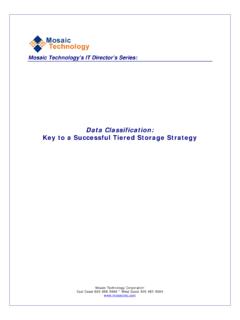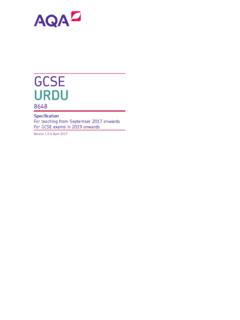Transcription of Sustainable Real Estate Roundtable: Member Briefing ...
1 international MARKETS FOR renewable energy CERTIFICATES (REC S)Page 1 Sustainable real Estate Roundtable 2012 Sustainability Roundtable, Inc. Confidential For use in connection with SR Inc Services only. 2012 Sustainability Roundtable, Inc. Confidential For use in connection with SR Inc Services only. 2012 Sustainability Roundtable, Inc. Confidential For use in connection with SR Inc Services real Estate Roundtable: Member Briefing international MARKETS FOR renewable energy CERTIFICATES (RECs) international MARKETS FOR renewable energy CERTIFICATES (REC S)Page 2 Sustainable real Estate Roundtable 2012 Sustainability Roundtable, Inc. Confidential For use in connection with SR Inc Services of INTRODUCTION REC MARKETS 6 market Structure 6 market Size and Pricing European Union 12 market Structure 12 market Size and Pricing 16 United Kingdom 17 Belgium 18 Denmark 19 France 19 Germany 20 Italy 20 Poland
2 21 Spain 22 Sweden Australia 23 market Structure 24 market Size and Pricing India 27 market Structure 27 market Size and Pricing China 32 Overview Brazil 33 Overview 33 international MARKETS FOR renewable energy CERTIFICATES (REC S)Page 3 Sustainable real Estate Roundtable 2012 Sustainability Roundtable, Inc. Confidential For use in connection with SR Inc Services energy certificates (RECs): are credits that represent the environmental and other non-power attributes of renewable electricity generation and are a component of all renewable electricity products (one REC for every 1 MWh or 1,000 kWh).
3 RECs are measured in single megawatt-hour increments and are created at the point of electric generation. Buyers can select RECs based on the generation resource ( , wind, solar, geothermal, etc), when the generation occurred, and the location of the energy is important to note that RECs cannot be purchased as a method of carbon offset, but only carry the environmental attributes of renewable energy . The two mechanisms are different and serve different purposes: Carbon offsets allow companies to reduce their liability for greenhouse gas emissions, with each carbon offset financing a one ton reduction in carbon dioxide (CO2e) emissions through a variety of projects. RECs account only for renewable energy generation most often electricity and thus represent a direct impact on the energy system (in effect reducing emissions associated with power consumption).This international Markets for renewable energy Certificates (RECs) Briefing supplements SR Inc s five-part report on Managing energy Procurement Risk, with market overviews and guidance to support the procurement of RECs in major international markets.
4 The Briefing addresses requests from multiple SRER Member -Clients for information on how companies procure renewable energy and RECs in international markets, including the , (and Member States), Australia, China, India and Brazil. It focuses on two methods of renew-able energy procurement and verification: purchasing RECs, both bundled and unbundled, and participating in utility green programs. Most countries with es-tablished REC markets have two trading schemes: compliance markets, where utilities and energy suppliers issue or purchase RECs to comply with quotas for renewable energy ; and voluntary markets, where RECs are bought and sold pri-marily by companies aiming to meet corporate goals for renewable energy and to reduce GHG emissions from electricity. The Briefing provides an overview of the chain of custody, certification, traceability and credibility, market size, and current REC prices within each to the Global Corporate renewable energy Index (CREX), a survey-based research report by Bloomberg New energy Finance and Vestas Wind Sys-tems, companies that procure renewable energy do so largely through RECs.
5 In 2010, due to ample supply from diverse sources and wide availability at reason-able prices, over 70% of all renewable electricity purchased by CREX companies was via voluntary REC markets. In contrast, only 5% of companies purchased re-newable energy via utility green programs and 1% through projects that they directly financed. 23% of companies purchased carbon offsets to reduce their emissions liability, without procuring renewable 1 IntroductionCARBON OFFSETSINTERNATIONAL MARKETS FOR renewable energy CERTIFICATES (REC S)Page 4 Sustainable real Estate Roundtable 2012 Sustainability Roundtable, Inc. Confidential For use in connection with SR Inc Services showed that technology companies lead in corporate procurement of re-newable energy . Figure 1 below details the average ratio of renewable energy to total electricity use for five sectors, as reported by 2009 and 2010 CREX sur-vey respondents.
6 In 2010, CLP Holdings, Intel Corporation, Kohl s Corporation, Koninklijke KPN and Whole Foods market led survey respondents with the larg-est total renewable electricity procurement (in absolute MWh purchased).2 Fig-ure 2 below shows that companies operating in Europe have a much higher av-erage ratio than their North American ( and Canada) counterparts, though both regions are ahead of Asia and Oceania. Table 1 provides a summary of the major markets detailed in this Briefing . It lists the presence of a REC market , recent estimates of renewable energy de-mand and target generation levels, the certification scheme, and the regula-tory bodies certifying and accounting for 1. renewable energy procurement by : Bloomberg New energy Finance & Vestas Wind Systems 2. renewable energy procurement by : Bloomberg New energy Finance & Vestas Wind Systems MARKETS FOR renewable energy CERTIFICATES (REC S)Page 5 Sustainable real Estate Roundtable 2012 Sustainability Roundtable, Inc.
7 Confidential For use in connection with SR Inc Services MarketRenewables as % of energy DemandRenewable energy TargetsCertification Scheme or Regulating BodyCertification Ye s13% (2011)State-level targets varyGreen-e,State Rating 13% (2010)20% by 2020 European energy Certification SystemGovernmentGermanyNo11% (2010)18% by 2020N/AN/AFranceYe s13% (2010)23% by 2020 Observ ERGovernmentDenmarkYe s23% (2010)35% by s14% (2010)21% by 2020 The Green certificate s4% (2010)15% by 2020 OFGEM, DEFRAG overnmentSwedenYe s46% (2010)50% by 2020 GrexelGovernmentItalyYe s9% (2010)17% by 2020 GSEG overnmentBelgiumYe s6% (2010)13% by 2020 Brugel, VREG, CWaPEGovernmentPolandYe s10% (2010)15% by 2020 Scheme combined with a tradable GOGovernmentAsia IndiaYe s9% (2009)State-level targets varyState Electric Regulatory Commissions (SERCs)GovernmentChinaNo4% (2009)15% by 2020N/AN/AAustraliaYe s8% (2010)20% by 2020 Clean energy Regulator (CER) (2009)N/AN/AN/AEnergy demand forecasts indicate that all global regions will shift to cleaner fuels for electricity production, due largely to environmental policies.
8 Projection data from three studies on international market growth show the following statistics: The international energy Agency (IEA) predicts that demand for renewable energy (wind, solar, geothermal) will grow by 597%, representing 18% of total demand in 2035 (up from 13% in 2008).3 Demand for all cleaner energy (includ-ing hydro, biomass, biofuels, and waste-to- energy ) will grow by 58% over the same 1. renewable energy demand and targets per : SR Inc analysis, REN21, and MARKETS FOR renewable energy CERTIFICATES (REC S)Page 6 Sustainable real Estate Roundtable 2012 Sustainability Roundtable, Inc. Confidential For use in connection with SR Inc Services only. The energy Information Administration (EIA) and IEA foresee most growth in generation and demand happening in non-OECD countries, especially Brazil, China, and In terms of supply, Europe will experience a significant increase in wind power generation from the current 5% of total generation to 20% by 2040 according to a study by ExxonMobil, or 18% of total generation in 2035 according to the For more on global energy trends, see Section 1 of SR Inc Report Managing energy Procurement Risk.
9 1 U. S . market StructureIn the , RECs on the voluntary market are generally sold unbundled, or de-coupled from the physical electricity delivered to the grid. Companies can also procure bundled RECs that are tied to their local grid or participate in utility green programs that fund renewable energy development and REC purchasing by the utility. Table 2 below summarizes the available means of procuring RECs in the , and Figure 3 below illustrates the structure of the REC TypeAdvantagesDisadvantages1. Unbundled voluntary RECs Often less expensive than other two options Supply not limited to utilities Multiple supply options Higher reputational risk (in case of low quality RECs) Certification (ex: Green-e) may increases costs2. Bundled voluntary RECs Directly tied to local grid Lower reputational risk Generally higher cost Limited supply in most markets3. Utility green pricing Simplified procurement through utility or supplier Tied directly to the local grid Greater budget certainty No additional cost in time or services Fees set by utility or supplier may be higher than market Lack of control over quality and location of generation source4 REC MarketsTable 2.
10 Three types of REC procurement in the : SR Inc MARKETS FOR renewable energy CERTIFICATES (REC S)Page 7 Sustainable real Estate Roundtable 2012 Sustainability Roundtable, Inc. Confidential For use in connection with SR Inc Services BodiesElectricity generation and distribution in the is regulated by the Federal energy Regulatory Commission (FERC), which oversees grid operation and distribution pric-ing by 10 regional transmission organizations (RTOs) or independent system opera-tors (ISOs). These ISOs and RTOs are used to track the generation and retirement of compliance RECs and quality of the generation source. The voluntary market is not regulated by any of these bodies, although the Department of energy and the EPA do encourage the use of tracking systems to regulate generation and retirement and prevent double of Custody, Certification and TraceabilityThe EPA s Green Power Partnership requires that RECs used for qualification be gen-erated and retired within the The EPA lists two means of verification of the lo-cation of generation and retirement: 1) purchasing RECs that are registered with a renewable energy tracking system (described below), or 2) entering into a contract for REC purchasing from a marketer or generator and requesting an audit of the en-tire chain of custody.






